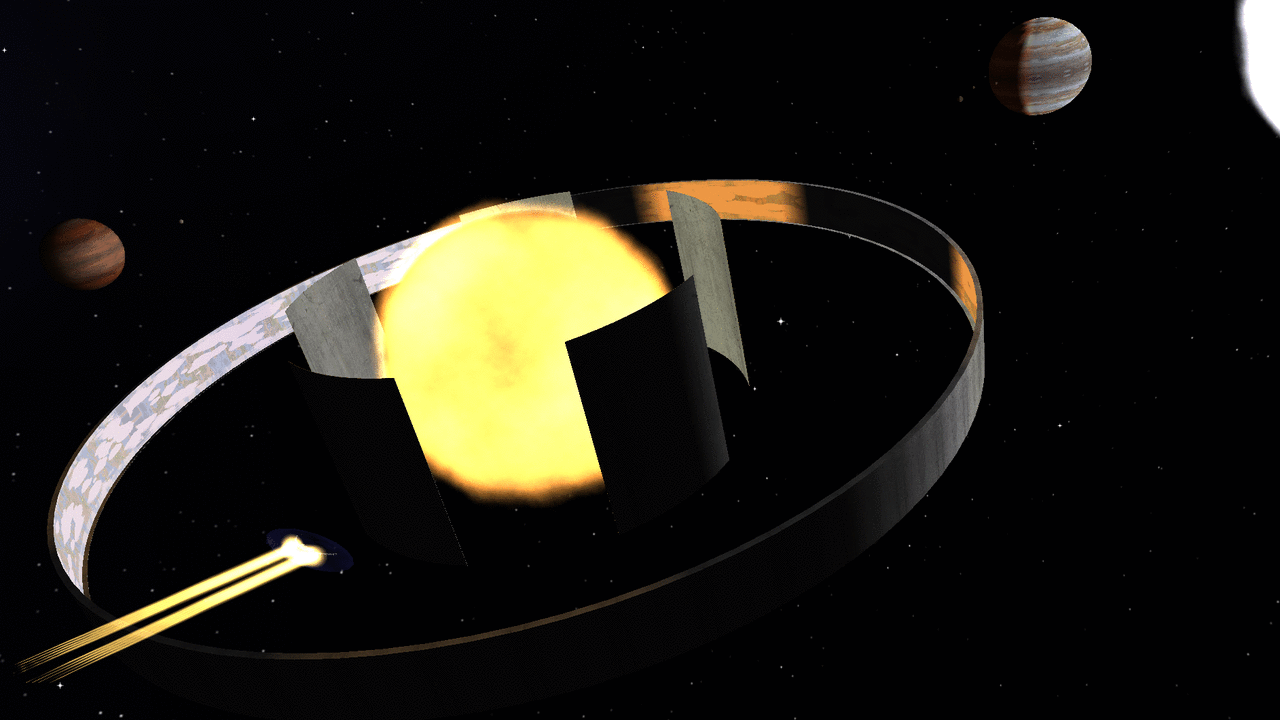
Hello everyone and welcome to another Stellaris development diary. Today's dev diary is going to cover the headline feature of the Utopia Expansion that we announced mere hours ago: Megastructures.
Megastructures (Paid Feature)
Have you ever looked at a Fallen Empire's Ringworld and thought 'I want to build one of those?'. Well, so have we, and in the Utopia expansion you will be able to do so. Megastructures are massive multi-stage construction projects that require an enormous investment of resources and time but offer quite spectacular pay-offs. There are four Megastructures that you can build: The Ringworld, the Dyson Sphere, the Sentry Array and the Science Nexus. In order to build a Megastructure you will need to unlock a number of advanced technologies and pick the appropriate Ascension Perk. This will unlock the ability for your construction ship to build a Megastructure Construction Site in an appropriate location. The Construction Site alone is a project that takes a large amount of resources and takes several years to complete.

Once you have built the Construction Site for a Megastructure, you will be able to upgrade it to the first construction stage for a Megastructure. For the Ringworld and Dyson Sphere, this is an initial frame that provides no benefit, while the Science Nexus and Sentry Array gets a partially completed structure that provides some of the benefit of the finished version. From here, you can upgrade the unfinished Megastructure to the next stage(s) by investing more time and resources. For the Dyson Sphere, Science Nexus and Sentry Array, you upgrade one stage at a time, with increasing benefits from each finished stage until you have the completed Megastructure. The Ringworld Frame has four segments that can all be upgraded into finished Ringworld Sections simultaneously.

The four different Megastructures work as follows:
Ringworld: Can only be built around a planet-rich star in your borders and, once finished, provides four maximum size 100% habitable planets. The Ringworld construction project will consume all planets in the system to be used as building materials. Cannot be built around Black Holes, Pulsars or Neutron Stars.

Dyson Sphere: Can only be built around a star in your borders and provides a huge amount of energy each month, with the amount increasing for each stage of the Dyson Sphere completed. Once completed, the Dyson Sphere will cool down the system, turning most planets there into frozen worlds. Cannot be built around Black Holes, Pulsars or Neutron Stars.

Science Nexus: Can be built around any non-inhabitable non-moon non-asteroid planet (similar to Habitats) and provides a huge amount of science each month, with the amount increasing for each stage of the Science Nexus completed.

Sentry Array: Can be built around any non-inhabitable non-moon non-asteroid planet (similar to Habitats) and functions as a sensor station, providing sensor range in a radius that grows for each stage of the Sentry Array completed. Once fully finished, it will give complete sensor view of the entire galaxy.

Building a Megastructure is hardly a subtle affair, and once an empire starts construction on such a project, all other empires that have communications with them will be notified about the start, progression and completion of such a project. As monumental undertakings involving the resources of a whole empire, these projects can also have unintended political and diplomatic consequenses. Also, much like the Ringworlds already in the game, you are not the first civilization to conceive of the idea of Megastructures, and you may encounter ancient, ruined Megastructures while exploring.

That's all for today! Next week we'll be talking about yet another feature of the Utopia expansion: Psionic Transcendance and The Shroud.





